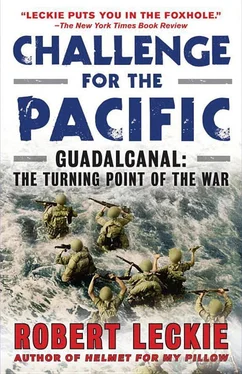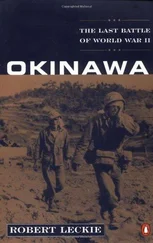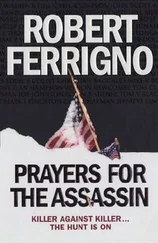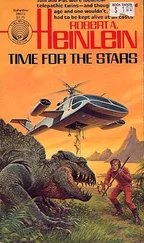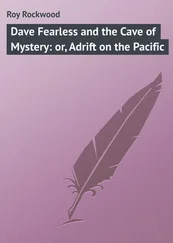Thus the first seafight in history during which the contending ships did not exchange a shot, and it had been a Japanese tactical victory. The American loss of 30,000-ton Lexington , with oiler Neosho and destroyer Sims , far outweighed Japan’s loss of 12,000-ton Shoho and the ships sunk at Tulagi. Nevertheless, the strategic victory was American. Big Shokaku and Zuikaku had to be counted out of Admiral Yamamoto’s plans for Midway, and Port Moresby had been saved.
Japan had suffered her first reverse.
In Tokyo, the cancellation of the Port Moresby invasion was regarded as a temporary setback to the operation to isolate Australia. It was decided that Port Moresby could be taken in the rear. Troops would be ferried the short safe distance from Rabaul to Buna and would then march over the lofty Owen Stanleys to occupy the Allied base.
On May 18, Imperial General Headquarters activated the 17th Army with orders to carry out these operations. Command was given to Lieutenant General Haruyoshi Hyakutake.
Thin, testy, and tenacious, Haruyoshi Hyakutake was regarded as one of Japan’s most promising “younger” generals. Like Alexander Archer Vandegrift of the American Marines, he was fifty-five and a veteran of thirty-three years of service. Although equal in rank, [4] There were no brigadier generals in the Japanese Army. A Japanese lieutenant general was only equal to an American major general.
Hyakutake commanded a much larger body of troops; but these, like Vandegrift’s own, were widely scattered.
On the very day that Hyakutake took command of the 17th Army, he was—again like Vandegrift—deprived of one of his finest units, and commanders. The fierce Colonel Kiyono Ichiki was selected to lead his crack regiment of landing troops ashore on Midway. While Hyakutake prepared to fly down to his new headquarters at Rabaul, Colonel Ichiki and his staff boarded battleship Yamato to be briefed on their part in Admiral Yamamoto’s grand design.
Undismayed—for Haruyoshi Hyakutake was a man of optimism and a supreme confidence bordering on arrogance—17th Army’s commander busied himself assembling forces spread throughout China and the Dutch East Indies. He had not the slightest doubt that he would make short work of Moresby, and his only thought for Tulagi was that it would cover his exposed left flank.
And he paid absolutely no attention to the big island with the strange name on the other side of Iron Bottom Bay.
Two days later, not nearly so free of doubt or dismay, Major General Archer Vandegrift sailed from Norfolk, Virginia, for Wellington, New Zealand. With him aboard big Wakefield— the converted passenger liner Manhattan— were the Fifth Marines and most of the Eleventh’s artillery. They sailed under destroyer escort down the perilous Atlantic Coast, silhouetted for German submarines, like so many doomed tankers and merchantmen before them, by the pleasure-as-usual lights of the seashore resorts. They entered the Panama Canal and debouched into the Pacific, where the destroyers left them and later their long-range plane escort.
With only their own speed and a zigzag course to protect them against Japanese submarines, they sailed the vast Pacific in solitude. Only Vandegrift and a few others knew that Wakefield carried enough life jackets and lifeboats for only half the men. But the men were irrepressible. In the only moment of crisis—when Wakefield plowed into an enormous swell and waves of water plunged down open hatches—a lighthearted Marine averted panic with the cry, “Women and children first!”
It was May 27—Japan’s Navy Day, the date upon which the immortal Admiral Heihachiro Togo had annihilated the Russian Fleet at Tsushima—and today, thirty-seven years later, Admiral Yamamoto was leading Combined Fleet to Midway.
Yamamoto himself was aboard Yamato , the 64,000-ton battleship which was easily the mightiest ship afloat. Yamato mounted nine 18.1-inch [5] Naval artillery is measured by the diameter of the shells fired.
guns firing 3200-pound shells, 500 pounds heavier than the 16-inch projectiles fired by the best of the American battleships. One of her turrets weighed as much as a big destroyer and her sides were armored with steel sixteen inches thick. She was the symbol of Japan’s naval strength, this monster battleship, and Yamamoto gloried in her power. Here, as she lay at anchor at Hashirajima in the Inland Sea, the admiral had worked out the final details of the operation which was to destroy American seapower in the Pacific.
First he had attended to the possibility of any repetition of the Doolittle raid. A northern invasion force built around three light carriers was already en route to the western Aleutians in the North Pacific. Its mission was to seize Kiska and Attu, thus pushing American airbases back eastward, and also to draw American carrier strength away from Midway.
It was at Midway that the knockout blow was to be delivered. Most of the vast armada of 162 ships which Yamamoto had assembled were to sail to that island. The striking force consisted of four big, fast carriers under Chuichi Nagumo, the hero of Pearl Harbor, supported by one light carrier and four seaplane carriers, and backed up by no less than eleven battleships and a host of cruisers and destroyers and submarines. Once all these fighting ships had done their work, Colonel Kiyono Ichiki’s shock troops would storm ashore at Midway.
At eight o’clock in the morning of that momentous Navy Day, Nagumo’s flagship, Akagi , hoisted the signal:
“Sortie as scheduled!”
With cheering crews lining the rails, the carriers slipped past the battleships that were to follow. Destroyers and cruisers of the protecting screens took up their stations, white bow waves curling away from their prows. Steadily and with great majesty, Striking Force made for Bungo Strait. The ships passed through these narrow waters with all hands at battle station, until they had entered the Pacific and the bullhorns blared:
“Passage through strait completed. Stow gear. Restore normal condition of readiness.”
Aboard the carriers, men in undress whites and green work uniforms began to drift up to the flight decks to smoke. Some took off their shirts to do calisthenics in the waning sun. Officers sitting in canvas deck chairs chatted guardedly about the operation.
In a few more minutes, all of Striking Force would be at sea.
Landing Force was already underway.
It had sailed from Saipan under Rear Admiral Raizo Tanaka. Tanaka, a veteran destroyer leader who had participated in Japanese landings on the Philippines and the Dutch East Indies, had his doubts about the Midway operation. So did Commander Tameichi Hara, one of Tanaka’s ablest destroyer captains. After Tanaka had whispered details of the plan to Hara early last spring, the commander had blurted out his conviction that high command had lost its mind. 3
“Shhhhh!” Tanaka said warningly. “As a matter of fact, I’m not sure about it. I hope it’s not true.” 4
But it was, and Tanaka’s squadron consisting of flag cruiser Jintsu and ten destroyers, including Hara’s Amatsukaze , was ordered to escort Colonel Ichiki’s transports from Saipan to Midway. The day before Striking Force sortied from Japan, they put to sea.
Colonel Ichiki, as always, was supremely confident. Tanaka was not. Nor was Hara, who stood on Amatsukaze’ s bridge, sunk in misgivings. 5
Admiral Chester Nimitz knew of the Japanese approach. Excellent intelligence work, notably assisted by the breaking of the Japanese code, had alerted Nimitz to Japanese Combined Fleet’s intention to sail to battle again. Nimitz became convinced that the strike was aimed at either Hawaii or Midway, probably Midway, and he conveyed this belief to Admiral King.
Читать дальше
